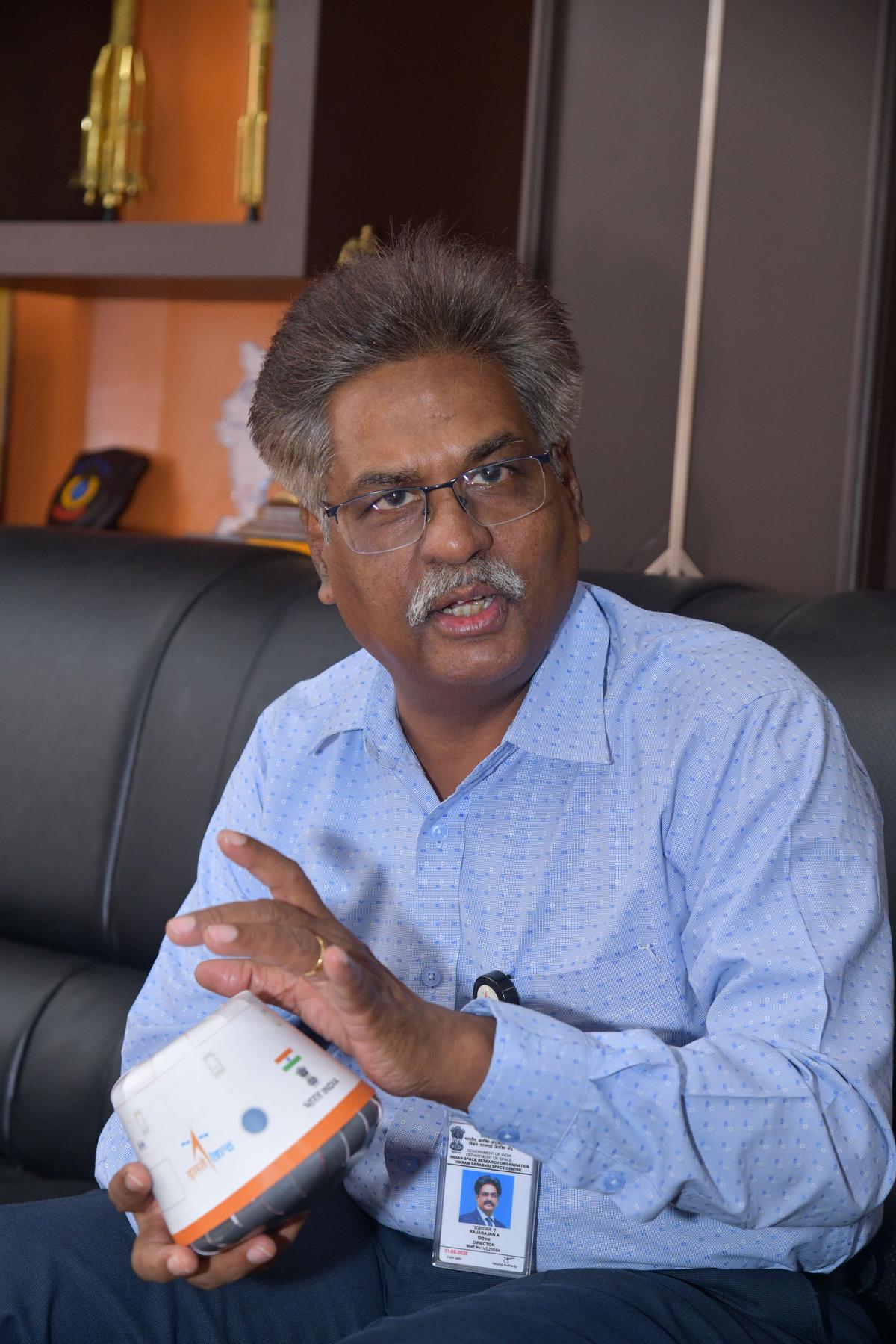Science
Successful Air-Drop Test Advances India’s Gaganyaan Mission

The Indian Space Research Organisation (ISRO) successfully completed the first Integrated Air Drop Test (IADT-01) on August 24, 2025, at Sriharikota. This test represents a significant milestone for the Gaganyaan program, which aims to send humans into space. A. Rajarajan, senior scientist with ISRO and Director of the Vikram Sarabhai Space Centre (VSSC), shared insights on the test’s importance and the upcoming phases of the mission.
Following IADT-01, ISRO plans to conduct the second Test Vehicle Mission (TV-D2) and the uncrewed Gaganyaan-1 (G1) flight. These missions are essential steps leading up to the actual manned mission. Mr. Rajarajan emphasized that safety is the top priority for human spaceflight, making these tests critical.
Complex Challenges Ahead for Gaganyaan
Mr. Rajarajan characterized the upcoming TV-D2 mission as a “complex mission.” This phase will rigorously evaluate the crew escape system (CES) under various critical conditions. The ISRO successfully conducted the Gaganyaan TV-D1 mission in October 2023, laying the groundwork for these subsequent trials.
For the uncrewed Gaganyaan-1 mission, the spacecraft will be launched aboard a human-rated LVM3 rocket, equipped with Vyommitra, a humanoid robot developed by ISRO. This integration highlights the innovative approaches being utilized in the Gaganyaan program.
On the success of IADT-01, Mr. Rajarajan expressed satisfaction with the results. He noted that the VSSC was responsible for approximately 90% of the test’s activities, collaborating closely with the Human Space Flight Centre (HSFC), the Satish Dhawan Space Centre, and other agencies, including the Indian Air Force (IAF).
Test Details and Future Implications
The IADT-01 successfully demonstrated the parachute-based crew module deceleration system. A 4.8-tonne dummy module was dropped from a height of 3 kilometers using a Chinook helicopter operated by the IAF. Mr. Rajarajan remarked, “The touchdown was achieved as expected. Now, we have a clearer picture of parachute deployment and the touchdown conditions.” The data collected from this test will be analyzed to inform future trials.
He further explained that while dropping an object from a helicopter might seem straightforward, the IADT-01 involved intricate instrumentation, design, and development. “It was a very complex mission,” he stated, underscoring the meticulous preparation behind the test.
As ISRO continues its journey toward human spaceflight, the success of IADT-01 sets a promising precedent for future developments in the Gaganyaan program. The organization remains committed to ensuring the safety and reliability of its missions, aiming to inspire a new generation of space exploration.
-

 World5 months ago
World5 months agoSBI Announces QIP Floor Price at ₹811.05 Per Share
-

 Lifestyle5 months ago
Lifestyle5 months agoCept Unveils ₹3.1 Crore Urban Mobility Plan for Sustainable Growth
-

 Science4 months ago
Science4 months agoNew Blood Group Discovered in South Indian Woman at Rotary Centre
-

 World5 months ago
World5 months agoTorrential Rains Cause Flash Flooding in New York and New Jersey
-

 Top Stories5 months ago
Top Stories5 months agoKonkani Cultural Organisation to Host Pearl Jubilee in Abu Dhabi
-

 Sports4 months ago
Sports4 months agoBroad Advocates for Bowling Change Ahead of Final Test Against India
-

 Science5 months ago
Science5 months agoNothing Headphone 1 Review: A Bold Contender in Audio Design
-

 Top Stories5 months ago
Top Stories5 months agoAir India Crash Investigation Highlights Boeing Fuel Switch Concerns
-

 Business5 months ago
Business5 months agoIndian Stock Market Rebounds: Sensex and Nifty Rise After Four-Day Decline
-

 Sports4 months ago
Sports4 months agoCristian Totti Retires at 19: Pressure of Fame Takes Toll
-

 Politics5 months ago
Politics5 months agoAbandoned Doberman Finds New Home After Journey to Prague
-

 Top Stories5 months ago
Top Stories5 months agoPatna Bank Manager Abhishek Varun Found Dead in Well









